There are over 200 recognised breeds of chicken around the World but not all hens are equal in their laying ability so if you would like chickens for eggs, look at my top 10 laying hens below first. It is commonly accepted that all chickens decended from the Jungle Fowl. Pure breeds of chicken have been developed over many hundreds, even thousands of years from the Jungle Fowl (although science is still challenged by the Auraucana that lays blue eggs).
A Little History of Laying Hens
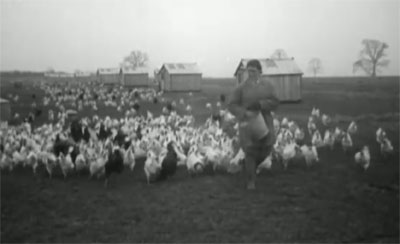 Before the First World War, ducks were the better egg layers and chicken breeds that layed 100 eggs or more per year were considered good layers. Most of the development of pure bred laying hens came after the Second World War when there were many laying trials and tests and it was common for breeders to ‘trap nest’ hens to record their individual output so that they could be used to produce further generations of laying hens.
Before the First World War, ducks were the better egg layers and chicken breeds that layed 100 eggs or more per year were considered good layers. Most of the development of pure bred laying hens came after the Second World War when there were many laying trials and tests and it was common for breeders to ‘trap nest’ hens to record their individual output so that they could be used to produce further generations of laying hens.
Development of the ‘Hybrid’
The developments with pure breeds were soon to be followed by hybrid (a cross of pure breeds) laying hens. There were millions of pounds spent during the 1950’s on creating hybrids that were not only capable of laying more eggs but also had a good feed conversion.
During this development, the parent flocks that created these hybrid layers were becoming a different ‘strain’ of their own because hens were selected for egg production rather than the way they looked.
Interestingly, duck eggs could have been on our breakfast table rather than chickens eggs… but they did not do well kept in confined conditions like chickens.
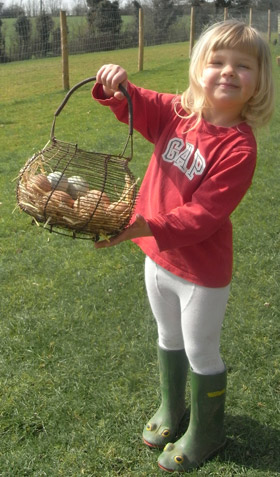 My Top 10 Chickens for Eggs
My Top 10 Chickens for Eggs
The following table lists my top 10 laying hens (a mixture of hybrids and pure breeds) and gives an estimate of the number of eggs they are capable of producing if kept in the right conditions.
Note that there are many different strains of hens from different breeders that will perform differently… egg numbers can vary on a number of other factors too, particularly with feeding and daylight levels.
Exhibition strains that have been closely bred are not usually selected for their egg laying performance. Try to purchase hens from a good ‘Utility Strain’. There are some breeders that advertise utility strains and the number of eggs they expect from their strain every year.
Hybrids are much more reliable at producing a given number of eggs and are bred mainly for this purpose.
1. Goldline (Hybrid)
The ultimate egg machine. This little commercial brown hen will lay up to 320 large brown eggs in her first year. They have a good feed ratio and are very similar to the birds used on farms to produce eggs for the consumer market. A very friendly bird that will be in your house if the door is left open!
2. White Leghorn (Pure Breed)
Small attractive birds with a good feed efficiency that lay up to 300 large white eggs in their first year. These are the standard commercial hen used in the U.S. for egg production (because white eggs are preferred). They can be quite flighty and can fly well so make sure they can be kept securely before you buy them or clip a wing to keep them on the ground.
3. Nera (Hybrid)
Hardy birds that are great foragers and layers of a good quality large brown egg. The Nera is a cross between a certain strains of Rhode Island Red and Barred Plymouth Rock, originating in Scotland. You can expect around 270 eggs in their first year.
4. Amber (Hybrid)
The Amber is a Rhode Island Red based hybrid that looks attractive and has very soft feathering. She is a fantastic layer of up to 300 medium eggs in her first year.
5. Speckledy (Hybrid)
The Speckledy is a flecked dark hen, a cross of a Rhode Island Red and Marans. She lays around 270 large dark brown eggs in her first year.
6. Rhode Island Red (Pure Breed)
The Rhode Island Red is a good layer of up to 220 large brown eggs in their first year. Be sure to get a utility strain though as these are a popular show bird.
7. Marans (Pure Breed)
Good layers of medium to large dark brown eggs. Copper Black Marans seem to be the best layers laying up to 200 eggs in a year. They are often good winter layers, with pullets coming into lay during January.
8. Light Sussex (Pure Breed)
Attractive birds that will reward you with up to 200 medium tinted eggs.
9. Araucana (Pure Breed)
Araucanas are very unique looking. They initially came from Chile in South America. The Araucana lays around 200 medium sized blue to bluish-green
10. Crested Cream Legbar (Pure Breed)
An attractive hen with a small crest that will lay up to 180 medium sized blue to bluish-green eggs that will add a little colour to your egg boxes.

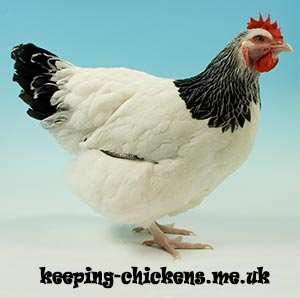

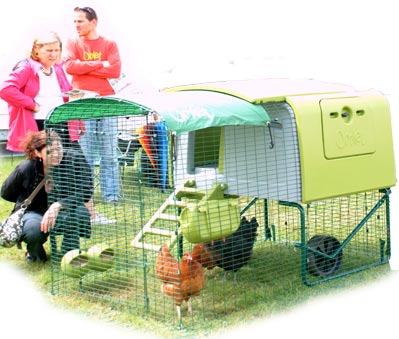
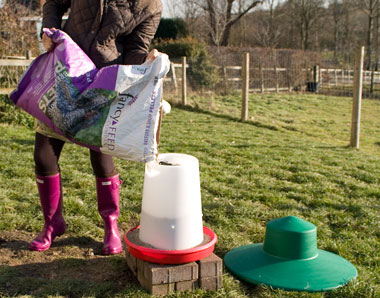

Hi
I’ve recently bought 4 hybird hens, they’re 16 wks old now. I let them out their coop every day to roam around my allotment, they are funny to watch jumping up and down & running after me, is this a sign that there happy? I feed them layers pellets, corn and oyster grit, and they help themselves to worms and greens around the place, they have been having runny poos is that something to worry about? How old will they be before they strt to lay? Also I want to buy 2 more hens. What is the best way to put them together ? Thanks x
They sound happy 🙂
I would worm them with Flubenvet if they have the runs (see my Flubenvet / worming page) although this can simply be a case of lots of greens being eaten. They should come in to lay around 18-22 weeks old. I would look at introducing new chickens on the poultrykeeper website if you make an introduction.
is there a food supplement to keep my maran eggs dark brown
please
The dark brown pigment found in Marans eggs gets deposited onto the outside of the shell shell rather than in the shell like blue or green eggs (it scratches off too) and is affected by hormones which change due to the time of year. The colour will be darker earlier in the season than later. The deposit of pigment is also affected by the speed at which the egg passes through the oviduct so selecting the darkest eggs to hatch is also selecting for hens that lay fewer eggs… The compromise has to be met in the middle where your hens are still productive and laying reasonably dark eggs. I’m afraid there is no food that will help this pigment as far as I am aware.
Something else to note about this breed, it’s called Marans (as in the town in France called Marans) in the singular and not Maran which so many people say 😉
Hi, we have recently got ourselves a couple of chickens (a seabright and a silkie) which were both picked on looks rather than laying ability. Could you advise a couple of other chickens we could perhaps put with them that are good layers of medium to large eggs? We did have 2 light sussex bantams but they turned out to be male and had to be returned. Thanks
Sebright bantams are small and I would suggest you stick with bantams to prevent bullying. Unfortunately this means you don’t get medium to large eggs from bantams… but they eat less and can lay just as well.
Have a look at the Chicken Breeds on poultrykeeper as this should give you some good ideas of other bantams / small chickens.
Hello,
I love this site it has been very informative.
My family and I are looking to get 5 hens as pets with the added bonus of some tasty eggs. We are undecided as to which breeds to go for and wanted a mixture so we can tell then apart and was wondering if we got all of our chickens from the same place (a petting farm that breeds chickens) we would be able to mix different breeds? We were thinking of getting a lavender pekin, a black pekin, a buff orpington, a rhode island red and a maran. Would this mix be ok? Also a large part of our garden is fenced off for our pet pig and were wondering if during the day the chickens would be able to free range with the pig. They will have a fox proof run and coupe at night and we will put electric wire around the top of the the pig run to prevent predeators during the day. The pig run fence is about 4.5 feet high will these breeds be able to escape from a fence of this height?
Thank you
The mix sounds fine, they are all large, heavy breeds. The Marans and RIR may fly over the fence but generally, once settled, they don’t bother. If they do, clip the outer primaries of one wing and they will be grounded. I think it’s a case of suck it and see. My 13 strong flock of Marans were behind a 4 foot fence and there was one who used to fly up onto the fence and into the garden regularly but the others never bothered. Generally, the heavier the breed, the less they can fly.
Thank you for you response. Just another quick question do you think our pig would pose a threat to our chickens?
Emma
I haven’t kept pigs but I’d say providing they have enough space, they should get out of the way quickly?
Hi i’m just about to get my first chickens, and was thinking of getting a Gingernut ranger and a Pepperpot from eglu. Would these 2 breeds give me 300 eggs approx per year, or should i look at other breeds as you mentioned above?